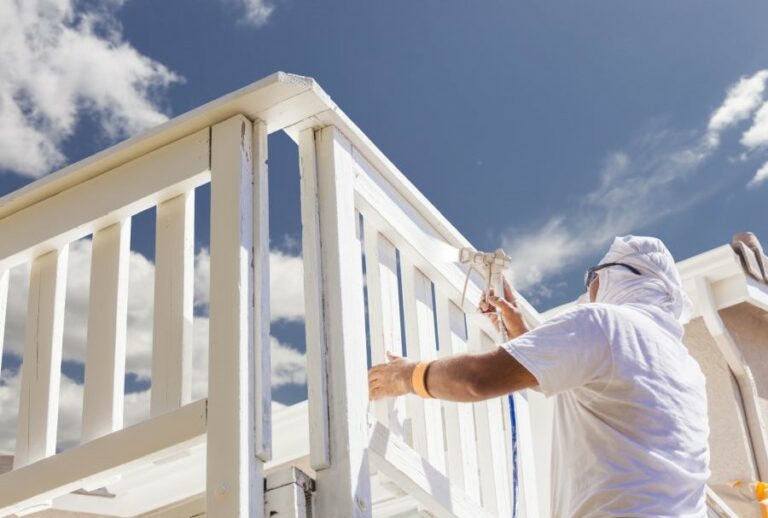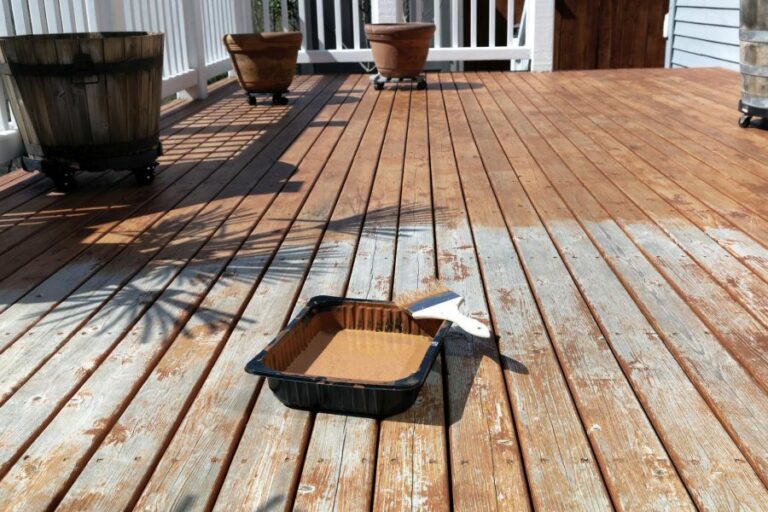Best Outdoor Fabric Paint, 25 Things You Should Know
Are you ready to explore the world of creativity and transform your outdoor fabrics with a touch of color and design? Look no further! We’re here to discuss the best outdoor fabric paint to breathe new life into your cushions, umbrellas, awnings, and more. With our expertise and recommendations, we’ll guide you toward the perfect strong, durable, and vibrant paint, ensuring your outdoor space becomes the ultimate canvas for your artistic expression.
The best outdoor fabric paints are durable, weather-resistant, UV-protected, and easy to apply. Top recommendations include Simply Spray Outdoor Fabric Paint, SolarFast Outdoor Fabric Paint, Rust-Oleum Outdoor Fabric Spray Paint, and DecoArt SoSoft Fabric Paint. Ensure proper application by following the manufacturer’s instructions for optimal results.

Elevate your outdoor space with the best outdoor fabric paint to suit your style and budget! Discover versatile, durable, and weather-resistant options that make a lasting impression. Read on for expert tips, top picks, and essential know-how for transforming your exterior fabrics!
Contents
- 1 Top-Quality Outdoor Fabric Paint
- 2 What Type of Paint Is Suitable for Use on Outdoor Fabric Materials?
- 3 Which is the Top-Quality Paint That Will Not Wash Off Fabric?
- 4 Is Outdoor Paint Suitable for Application on Fabric?
- 5 Is there water-resistant paint specifically designed for fabric applications?
Top-Quality Outdoor Fabric Paint
Outdoor fabrics are exposed to various weather conditions that may cause them to fade or wear out quickly. To prolong their lifespan, and to keep them looking vibrant and attractive, outdoor fabric paint is the perfect solution. However, not all fabric paint is created equal.
• Qualities to Look for in Outdoor Fabric Paint
– Durability and Weather-resistant
Outdoor fabric paint should be able to withstand harsh weather conditions such as extreme temperatures, rain, snow, and humidity. The paint should not crack or peel and should adhere well to the fabric material.
– UV Protection
Exposure to the sun’s ultraviolet (UV) rays can cause fabric colors to fade. Therefore, good-quality outdoor fabric paint should offer UV protection to maintain the intensity and brightness of the painted material.
– Easy Application
The best outdoor fabric paint should be easy to apply, whether using a brush, sponge, or spray. It should provide full coverage in one or two coats and allow for an even distribution of color.
– Wide Color Range
The paint should be available in various shades and colors, offering the flexibility to personalize any outdoor fabric item creatively.
• Top Recommended Outdoor Fabric Paints
1. Simply Spray Outdoor Fabric Paint
Simply Spray Outdoor Fabric Paint is a non-toxic, water-based spray paint designed specifically for outdoor fabrics. It is UV-resistant and fade-proof, ensuring that the colors remain vibrant even after prolonged sun exposure.
This fabric paint is easy to apply and dries quickly, making it an ideal choice for refreshing outdoor furniture, umbrellas, and cushions. They offer a wide range of colors to choose from, allowing for creative customization of outdoor fabric items.
Tip: It’s essential to follow the application instructions on the Simply Spray website to get the best results. Be sure to hold the can 12-18 inches away from the fabric and spray with smooth, continuous strokes.
2. SolarFast Outdoor Fabric Paint
SolarFast Outdoor Fabric Paint from Jacquard Products is another highly-recommended option for outdoor fabric painting projects. SolarFast is a permanent dye that becomes activated by the sun’s UV light, thereby ensuring long-lasting color on outdoor fabrics.
This unique dye offers highly effective UV protection, and the colors remain vibrant even after washing. SolarFast is primarily used for creating unique photographic art prints on fabrics, but it can also be used for touching up discolored outdoor fabric items.
Tip: Jacquard Products offers detailed instructions and tutorials for using SolarFast on their website. Make sure to familiarize yourself with them before embarking on your outdoor fabric painting project.
3. Rust-Oleum Outdoor Fabric Spray Paint
Rust-Oleum is a reputable brand known for its high-quality and durable paint products. Their outdoor fabric spray paint is no exception, providing excellent UV resistance and all-weather protection.
This fabric paint is specifically designed for outdoor fabrics made of polyester materials, making it suitable for refreshing or customizing outdoor cushions, pillows, and furniture.
Rust-Oleum offers a range of color options, from bright shades to homey earth tones, allowing for versatile outdoor fabric personalization.
Tip: For best results, follow the instructions provided by Rust-Oleum for proper application and drying times.
4. DecoArt SoSoft Fabric Paint
While primarily intended for indoor fabrics, DecoArt SoSoft Fabric Paint is also an excellent option for outdoor fabric painting projects. SoSoft is a flexible and soft acrylic paint that doesn’t stiffen the fabric or crack over time.
Though not specifically formulated to withstand outdoor weather conditions, DecoArt SoSoft can be used as an affordable alternative for outdoor projects if combined with a UV-resistant and weatherproof sealant.
Tip: DecoArt offers helpful step-by-step tutorials for using SoSoft Fabric Paint on various fabric surfaces, enhancing your overall painting experience.
• Conclusion
Outdoor fabrics need special attention and care when it comes to painting and maintenance. The best outdoor fabric paint should be durable, weather-resistant, UV-protected, easy to apply, and available in a variety of colors.
We recommend Simply Spray Outdoor Fabric Paint, SolarFast Outdoor Fabric Paint, Rust-Oleum Outdoor Fabric Spray Paint, and DecoArt SoSoft Fabric Paint for quality outdoor fabric painting projects.
Don’t forget to follow the manufacturer’s instructions for the best results, and most importantly, have fun personalizing your outdoor fabrics with bold, vibrant colors.
What Type of Paint Is Suitable for Use on Outdoor Fabric Materials?
• Types of Paint For Outdoor Fabric
When it comes to painting outdoor fabric, selecting the right type of paint is crucial to achieving long-lasting, vibrant colors that can withstand the elements. Three popular types of paint suitable for outdoor fabric are:
– Acrylic Fabric Paint
Acrylic fabric paint is specifically designed to adhere to fabric surfaces. It is water-based, non-toxic, and offers a wide range of vibrant colors. These paints are designed to resist fading and can be heat-set for added durability.
They are perfect for various applications, including clothing, outdoor cushions, and banners. One key benefit of acrylic fabric paint is that it maintains the soft feel of the fabric when dry.
Popular acrylic fabric paint brands include DecoArt SoSoft, Jacquard Textile, and Tulip Soft.
– Spray-on Fabric Paint
Spray-on fabric paint is another popular choice for outdoor fabric painting projects, as it provides a thin, even layer of color. This paint often comes in the form of aerosol cans, making it easy to apply and ensuring uniform coverage.
Some spray-on fabric paint brands are Simply Spray, Tulip ColorShot, and Rust-Oleum Fabric & Vinyl. These paints are specially formulated for outdoor use and offer fade-resistant, weatherproof qualities.
– Acrylic Latex Paint
Acrylic latex paint is not specifically made for fabric, but it can serve as an option for outdoor fabric painting projects. It has excellent adhesion, flexibility, and durability, making it suitable for use on various surfaces, including textiles.
These paints can also be easily thinned with water to achieve the desired consistency or mixed with a fabric medium for better adhesion to the material.
Prominent acrylic latex paint brands are Behr, Sherwin-Williams, and Benjamin Moore. Just make sure to choose exterior-grade paints for outdoor applications.
• Techniques and Tips for Painting Outdoor Fabric
Successful outdoor fabric painting requires the right techniques and tools to ensure a long-lasting and professional-looking result. Here are some tips and suggestions to guide you through the process:
– Prepping the Fabric
- Ensure the fabric is clean and free of any dirt or grease that may affect paint adhesion. Most outdoor fabrics can be cleaned with mild soap and water or a fabric-safe cleaner.
- Allow the fabric to dry completely before applying any paint.
- For optimal results, iron or steam the fabric to remove any creases or wrinkles.
- If you’re using acrylic latex paint, mix it with a fabric medium according to the manufacturer’s instructions. This will improve paint adhesion and flexibility.
– Painting Techniques
- Brush Painting: When painting with a brush, use a soft synthetic-bristle brush that can hold an ample amount of paint. Apply the paint in thin, even layers, allowing each layer to dry completely before adding additional coats.
- Spray Painting: When using spray-on fabric paint, be sure to work in a well-ventilated area and protect surrounding surfaces. Apply multiple thin, even coats, allowing the paint to dry between applications as per the manufacturer’s guidelines.
- Stenciling and Stamping: Create unique designs on your outdoor fabric using stencils, stamps, or handmade patterns. Use painter’s tape to hold the stencil in place and a foam brush or sponge for even paint application.
- Heat-setting: For acrylic fabric paint, heat-setting is an essential step to ensure lasting results. Following the paint manufacturer’s instructions, use an iron or clothes dryer to heat-set the paint once it has dried completely.
– Expert Recommendations
When working with outdoor fabric paint, here are some recommendations based on personal experience:
- Always do a patch test on a small, inconspicuous area of the fabric before committing to the entire project. This will help you determine how the paint adheres to the material and its final appearance.
- Work in a well-lit, clean environment to achieve the best results.
- For a more professional and long-lasting result, consider investing in high-quality brushes, stencils, and tools.
- Always follow the paint manufacturer’s instructions for application, drying times, and heat setting.
- Keep in mind that painted fabric may require extra care, such as gentle washing or spot cleaning, to maintain its appearance.
In conclusion, painting outdoor fabric is an excellent way to refresh, customize, and update your outdoor living space.
By selecting the right type of paint, such as acrylic, spray-on, or acrylic latex paint, and following the proper techniques, you can achieve beautiful, durable results that can withstand the test of time and the elements.
Type of Paint | Description |
|---|---|
Acrylic Fabric Paint | Water-based paint that adheres well to fabric and resists fading. Suitable for a variety of outdoor fabric projects. |
Outdoor Spray Paint | Quick and easy application on various surfaces, including fabric. Creates an even and smooth finish on outdoor fabric items. |
Textile Medium | Can be mixed with acrylic paint to improve its adherence and flexibility on fabric. Ideal for outdoor fabric painting projects. |
Upholstery Paint | Specifically designed for use on fabric surfaces, including outdoor cushions and furniture. Provides a durable and long-lasting finish. |
Which is the Top-Quality Paint That Will Not Wash Off Fabric?
When working with fabric, it’s essential to choose a paint that can withstand repeated washes without losing its vibrancy or peeling away from the material.
• Fabric Paint versus Acrylic Paint: Which One to Choose?
Before diving into our top recommendations, it’s important to understand the primary differences between fabric and acrylic paints. While both types of paint can be used on fabric, they each have unique properties affecting their durability and wash resistance.
– Fabric Paint
Fabric paint is specifically designed for use on textiles and has several distinct advantages:
- Flexibility: Unlike acrylic paint, fabric paint bonds well with fabric fibers, allowing them to remain flexible without cracking or peeling.
- Wash-Resistance: Quality fabric paints are designed to be durable through repeated washes.
- Fade-Resistance: Most fabric paints are formulated to resist fading, ensuring the artwork’s colors remain vibrant over time.
– Acrylic Paint
While not designed explicitly as fabric paint, acrylic paint can be used on fabric, although it may have some drawbacks:
- Rigidity: Acrylic paint can create a stiff, rigid feel on the fabric, leading to cracks and peeling over time.
- Lower Wash-Resistance: Acrylic paint may not hold up as well through repeated washing, causing fading and peeling.
However, some strategies can help make acrylic paints suitable for use on fabric:
- Add a fabric medium: A fabric medium can be mixed with acrylic paint to increase flexibility and wash resistance.
- Heat setting: After applying acrylic paint to the fabric, heat setting the paint (using a clothes iron or a tumble dryer) can improve its durability and wash resistance.
Considering these factors, we recommend using fabric paint when working on fabric projects to ensure a longer-lasting, wash-resistant result. However, if acrylic paint is your only option, follow the tips mentioned above to enhance its performance.
• Best Fabric Paint Options for Wash-Resistant Artwork
Here are our top three fabric paint recommendations based on their performance, durability, and superior wash resistance:
- Tulip Soft Fabric Paint: Tulip Soft Fabric Paint provides excellent coverage, dries soft and flexible, and is known for its durability and wash resistance. This water-based paint is available in a wide range of colors and finishes, allowing you to create unique designs on various fabric types.
- Jacquard Textile Color: Jacquard Textile Color is a professional-quality fabric paint that boasts excellent adhesion, wash resistance, and lightfastness. This paint leaves a soft, flexible finish on fabrics with minimal fading or cracking.
- Liquitex Professional Fabric Effects Medium: Although not a paint itself, the Liquitex medium can be mixed with any acrylic paint to transform it into flexible, wash-resistant fabric paint. This medium maintains the colors and texture of the original acrylic paint, ensuring that the design integrity is upheld.
• Tips for Applying Fabric Paint and Ensuring Longevity
To maximize the durability and wash-resistance of your fabric artwork, follow these steps:
- Pre-wash: Pre-washing your fabric helps remove any sizing or residue that could interfere with paint adhesion.
- Iron the fabric: Ironing your fabric before painting ensures a smooth, wrinkle-free surface so the paint goes on evenly.
- Use a fabric marker: Outlining your design with a fabric marker can help guide your paint application and improve the overall appearance of your artwork.
- Apply a light coat: It’s better to build up color in thin layers rather than applying a thick layer, which might crack or peel over time.
- Dry and heat-set: Allow your fabric paint to dry completely, and follow the manufacturer’s instructions for heat-setting. Typically, this process involves using a clothes iron or a tumble dryer to “bake” the paint into the fabric, ensuring a permanent bond.
• Caring for Your Fabric Art
To maximize the lifespan of your fabric artwork, follow the recommendations below:
- Wash your painted fabric on a delicate cycle or hand-wash it in cold water.
- Use mild laundry detergents designed for colors or delicate fabrics.
- Turn the fabric inside out, or put it in a mesh laundry bag to protect the design during washing.
- Avoid using bleach or fabric softeners, as these may degrade the paint over time.
- Either air-dry your painted fabric or use a tumble dryer on the lowest heat setting.
Following these tips can help ensure that your fabric paint artwork remains wash-resistant, vibrant, and durable through repeated use.
By using high-quality fabric paint, applying it properly, and caring for your fabric artwork, your designs can remain bold, beautiful, and wash-resistant for a very long time.
For additional guidance on fabric painting techniques, refer to the comprehensive resources available at the Jacquard Products website, which offers tutorials and tips from experts in the field: www.jacquardproducts.com.
Paint Brand | Type | Features | Price Range |
|---|---|---|---|
Tulip Soft Fabric Paint | Acrylic | Soft, flexible, permanent, mixable colors | $5-$15 |
Jacquard Textile Color | Acrylic | Vibrant colors, excellent permanence, heat set | $10-$25 |
Fabric Creations Fabric Ink | Ink | Super soft feel, water-based, lightfast | $5-$15 |
DecoArt SoSoft Fabric Paint | Acrylic | Softest fabric paint, lightfast, permanent | $5-$15 |
Scribbles 3D Fabric Paint | Dimensional | Permanent, machine washable, non-toxic | $5-$15 |
Is Outdoor Paint Suitable for Application on Fabric?
When it comes to selecting the right paint for your project, understanding the surfaces you’ll be painting on and the type of finish you desire is essential. If you are planning to paint on fabric, you might ask, “Will outdoor paint work on fabric?”
• Understanding Outdoor Paints
To evaluate whether outdoor paint will work on fabric, it is crucial to understand the various types of outdoor paints available, their characteristics, and their intended purposes.
– Latex Paint
Latex paint is a water-based paint that is often used for outdoor projects due to its durability and resistance to weather conditions. It is easy to clean up and emits low levels of volatile organic compounds (VOCs). Latex paint also adheres well to a variety of surfaces and dries relatively quickly.
– Acrylic Paint
Acrylic paint is a popular choice for outdoor surfaces due to its durability, resistance to fading, and ability to maintain color vibrancy. This water-based paint also has low VOC emissions and can be cleaned up easily.
– Oil-Based Paint
Oil-based paint is known for its permeability, long-lasting finish, and resistance to chipping, scratching, and water damage. However, it tends to emit high levels of VOCs, takes longer to dry, and requires a solvent for cleanup.
• Outdoor Paint and Fabric Compatibility
When it comes to using outdoor paint on fabric, some potential complications may arise due to differences in the nature of these materials.
– Porosity and Flexibility Issues
The flexibility of the fabric allows it to bend and contour, which may cause outdoor paint to crack or flake over time. Outdoor paints are typically designed for rigid surfaces and, thus, may not flex as needed when applied to the fabric.
– Absorption and Drying Time
The porous nature of fabric surfaces can cause outdoor paint to absorb into the material, leading to uneven coverage, a longer drying time, and a less vibrant appearance. This absorption can also cause the painted fabric to feel stiff and uncomfortable to wear or use.
– Wear and Tear
When applied to fabric surfaces, outdoor paints may wear or wash off more quickly than when applied to their intended surfaces. This wear can result in less durable and less vibrant designs, requiring more frequent touch-ups or repainting.
• Alternatives for Painting on Fabric
While outdoor paint is not the ideal choice for painting on fabric, specialized fabric paints and other alternatives would work better for this purpose.
– Fabric Paint
Fabric paint is specifically designed to work with fabric surfaces, ensuring better adhesion, flexibility, and color vibrancy. It is available in a range of colors and finishes, including metallic, glitter, and neon. Fabric paint can be easily applied using brushes, sponges, or stamps to create detailed and durable designs.
In my experience, I highly recommend using fabric paint when working with fabric surfaces. The flexibility and adhesion offered by fabric paint ensure a lasting and vibrant design.
– Fabric Markers
Fabric markers are another excellent option for creating designs on fabric. These markers provide more precise designs, eliminating the need for additional tools like paintbrushes. Fabric markers are available in a wide range of colors and tip sizes, allowing for intricate patterns and designs.
– Screen Printing Ink
Screen printing ink is designed to be used with a screen printing frame, allowing for intricate designs to be transferred onto fabric surfaces. This ink is highly durable and colorfast, ensuring long-lasting results.
Several reputable art companies, such as Speedball Art Products, offer high-quality screen printing inks designed specifically for fabric use.
• Conclusion
While outdoor paint does not provide the best results when applied to fabric surfaces, there are various alternatives available to achieve desired results. Fabric paint, fabric markers, and screen printing ink all provide effective and lasting solutions for creating designs on fabric materials.
Selecting the appropriate paint or ink based on your specific project will ensure a successful outcome and a long-lasting, vibrant finish.
Is there water-resistant paint specifically designed for fabric applications?
When it comes to protecting fabrics from the elements, waterproof paint can be a game changer. From outdoor furniture cushions to tents and awnings, waterproofing your fabric can prolong its lifespan and maintain its appearance.
• Types of Waterproof Paint for Fabric
There are several types of waterproof paint for fabric available in the market. Here are some of the most common options:
– Acrylic Paint
Acrylic paint can be used as a waterproofing solution for fabrics when mixed with a fabric medium. This combination allows the paint to adhere to fibers in the fabric, making it more flexible and durable.
Acrylic paint is available in a wide range of colors, making it an excellent option for those who want to add some color to their waterproof fabric.
– Latex Paint
Latex paint is another popular choice for waterproofing fabric. Latex is a water-based paint that is easy to work with and dries quickly. However, it may not be as flexible as acrylic paint when used on fabric, so it’s essential to test a small area and ensure it does not crack or peel when dry.
– Fabric Spray Paint
Fabric spray paint is a waterproof paint specifically designed for use on fabric. This type of paint typically contains a built-in fabric medium, making it easy to apply directly to fabrics without any additional steps.
Fabric spray paint usually comes in aerosol cans, making it easy to apply evenly and quickly to large surfaces.
• Application Process
To achieve the best results when using waterproof paint for fabric, it’s essential to follow the correct application process:
- Clean the fabric: Ensure the fabric you intend to paint is clean and free from dirt, grease, or any other contaminants that may hinder the paint’s adhesion. If necessary, wash the fabric and allow it to dry completely.
- Prepare the paint: If using acrylic or latex paint, mix it with a fabric medium according to the manufacturer’s instructions. This step is crucial to ensure the paint adheres properly to the fabric and remains flexible when dry.
- Test a small area: Before painting the entire fabric, test a small, inconspicuous area to ensure the paint adheres well, dries evenly, and does not crack or peel once dry.
- Apply the paint: Once satisfied with the test, apply the paint evenly over the fabric using a brush, sponge, or spray can, depending on the type of paint you are using. Allow the paint to dry completely, as per the manufacturer’s instructions, before handling the fabric.
- Repeat, if necessary: Depending on the fabric’s material and the type of paint used, you may need to repeat the process for optimal results. Check the manufacturer’s instructions for recommendations on how many coats are necessary.
• Maintenance and Care Tips
Proper care and maintenance will ensure that your waterproof fabric remains in good condition. Here are some tips to protect and increase the lifespan of waterproofed fabrics:
- Always clean the fabric gently, using mild detergent and lukewarm water. Harsh chemicals or high-pressure washing can cause the paint to peel or fade.
- Be mindful of the fabric’s exposure to direct sunlight. While waterproof paint can protect your fabric from water damage, long-term exposure to UV rays can cause the colors to fade or the paint to deteriorate. Use UV-resistant paint if your fabric will be exposed to sunlight for extended periods.
- Inspect the fabric regularly for signs of wear or damage to the waterproof coating. If you notice the paint starting to crack, peel or wear away, it may be time to reapply the paint.
• Conclusion
Waterproof paint for fabric can be a valuable tool in protecting and maintaining your outdoor fabrics. By choosing the right type of paint, following the correct application process, and practicing proper care and maintenance, you can prolong the life and appearance of your fabrics.







